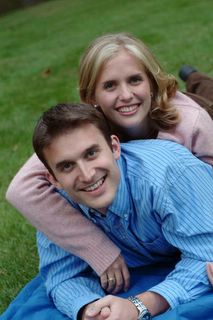similar yet different
What do you have in common with the giant anteater know as the Myrmecophaga tridactyla? Or how about the Balaenoptera musculus, A.K.A the blue whale? What is it that you have in common with a dolphin or a bat, a rhino or a cat? Or how about a sheep or a cheetah or an elephant?
What usually strikes us first about all of these animals in comparison to ourselves are the vast differences. Some live in the ocean. Some live in caves. And others live on the wide open plains of the African continent. Some have claws. Others have fins. And still others have wings. Some are big. Some are small. But what in the world do they have to do with us?
Well, compared to most of the other creatures that are on this earth, humanity has striking similarities with the afore mentioned animals. We are all mammals. That is, we are warmblooded vertebrates who at some time in our lives have hair on some or most of our body. We have a four chambered heart, three bones in our middle ear and one bone for our lower jaw. As babies we were all able to be nourished from the breast milk of our mothers. And we all have the potential to get hick-ups from time to time. That is, we are the only kind of animal that has a diaphragm.
Who would have thought that we had so much in common when we all look so different? At our core is the similarity of being mammals. All of the other features that seem to define us so well simply seem to be adaptations for our environment. Whales and dolphins for instance have adapted well to the ocean environment. They obviously can swim faster and dive deeper than the rest of us land mammals. And those silly bats. They can fly. And good thing too, ugly as they are, we don't want them hanging around too much.
Something at the core of our DNA has kept us all similar enough to be classified together as "mammals." Yet each mammal has changed and adapted to their own environment in order to live well. This seems to be the essence of organic church planting.
As churches plant in networks, each church will take on the traits and personalities of the people that make up that local body. Yet if one were to step back and look at all of the churches within the network, they would see a similar DNA. Each church may look a little different on its own, but together they are one.
My hope is that each church we plant will be warm-blooded. That all of them will have a backbone to them. And I am sure that all of them will be a little hairy with hick-ups from time to time. But my hope is that at their core will be a four chambered heart with room enough for Jesus and a few neighbors.


6 Comments:
"My hope is that each church we plant will be warm-blooded. That all of them will have a backbone to them. And I am sure that all of them will be a little hairy with hick-ups from time to time. But my hope is that at their core will be a four chambered heart with room enough for Jesus and a few neighbors."
What about the breasts...you forgot about the breasts!
Ok Brendar, here you go:
And that we would be able to be a church that helps you to "crave pure spiritual milk, so that by it you may grow up in your salvation." 1 Peter 2:2
Nice post, Mark.
I think I love you.
but he doesn't have any . . .
oh nevermind.
I don't care. It's a fool who looks for logic in the chambers of the human heart.
Post a Comment
<< Home